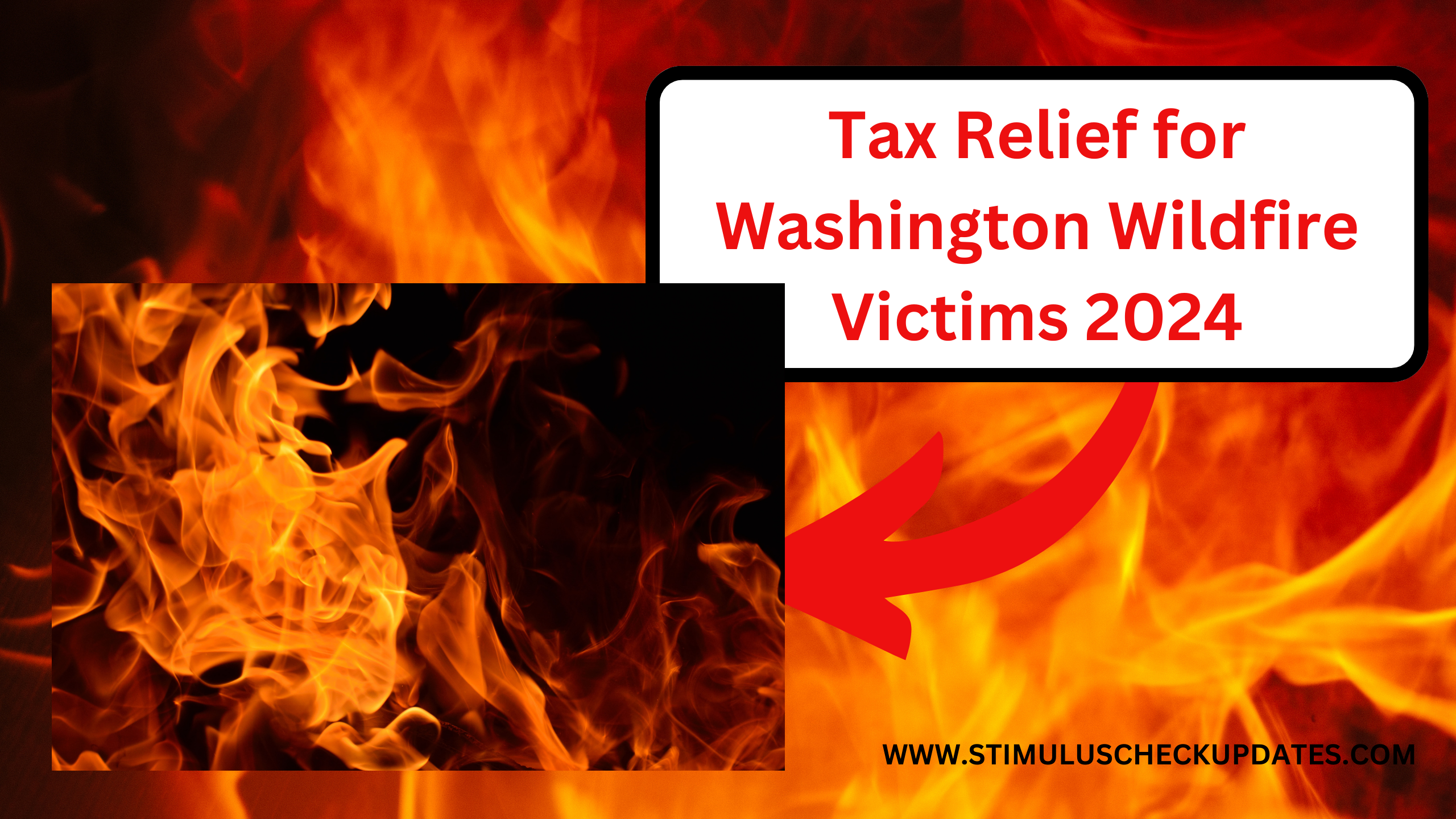In mid-August 2023, devastating wildfires broke out across parts of Washington state, causing widespread damage and destruction. Fueled by extreme heat and drought conditions, the fires rapidly spread, burning over 300,000 acres and leveling entire neighborhoods in some areas. Tragically, several lives were also lost in the chaotic blaze. The wildfires especially devastated communities in and around Spokane County, where over 1,000 homes were destroyed. In the aftermath of this disaster, recovery efforts are now underway. However, many individuals and businesses face significant losses and financial hardship. To help the affected taxpayers cope with their tax obligations during this difficult time, the Internal Revenue Service (IRS) is providing important relief measures.
The Fires Spread Rapidly
The wildfires began on August 18th in eastern Washington near the town of Colfax. Fierce winds helped the flames quickly spread, merging multiple smaller fires into massive complexes that grew out of control within days. By August 21st, the complexes had combined into what was called the Williams Flats Fire, burning over 190,000 acres across Spokane, Whitman, and Adams counties. Further west, the Chiwaukum Creek Fire erupted on August 17th near Leavenworth and ballooned to over 65,000 acres by the end of the month.
The fires caused evacuations of thousands of residents and closed major highways as thick smoke blanketed the region. In Spokane County, the small communities of Dartford and Mica were almost entirely wiped out. Over 500 homes burned in Dartford alone. The town of Ford, population 300, was nearly abandoned as its structures went up in flames. Further east, the city of Davenport with a population of over 3,000 was put under a Level 3 “go now” evacuation order. As fire crews from across the northwest battled the blazes, firefighters described the conditions as some of the most extreme and dangerous they had ever faced.
also read :
Expected Dates For Social Security Payment In January 2024
FEMA Disaster Declaration and Designated Disaster Areas
In early September, the Federal Emergency Management Agency (FEMA) issued a major disaster declaration for several Washington counties affected by the wildfires, including Spokane, Whitman, Adams, and Douglas. This declaration made federal funding and recovery assistance available to the state and local governments responding to the fires. It also allowed individuals in the designated disaster areas to potentially qualify for various tax relief measures from the IRS.
Specifically, the IRS designated Spokane County and the Confederated Tribes of the Colville Reservation as the “covered disaster area” eligible for tax relief provisions. This included the cities of Spokane, Airway Heights, Cheney, Deer Park, Medical Lake, Millwood, and Spokane Valley. The Colville Reservation spans parts of Ferry, Okanogan, Stevens, and Pend Oreille counties. Impacted taxpayers with addresses in these locations would automatically receive filing and penalty relief from the IRS.
Filing and Payment Deadlines Extended
In late September, the IRS announced important tax relief for those affected by the Washington wildfires. This included postponing various tax filing and payment deadlines that would have been due between August 18, 2023, and June 17, 2024, for any taxpayer with an address located in the designated disaster area. Now, all individual and business tax returns and payments originally due during this postponement period did not have to be filed or paid until June 17, 2024.
This extension applied to 2023 individual tax returns and payments normally due on April 15, 2024. It also covered estimated tax payments for 2023 that were originally scheduled for September 15, 2023 and January 16, 2024. Quarterly payroll, excise, and other business tax returns and payments with original due dates between October 31, 2023 and April 30, 2024, received the extended deadline of June 17 as well.
The filing extension even applied to 2022 tax returns if the taxpayer had received an automatic extension until October 15, 2023. However, any 2022 tax payments due last spring before the disaster were not eligible for relief. Penalties for failing to make certain payroll or excise tax deposits in late August and early September 2023 were also waived if the deposits were made by September 5th.
Automatic Relief for Disaster Area Residents
The IRS provided filing and penalty relief automatically to any taxpayer with an address of record located in the designated disaster area. These taxpayers did not need to contact the IRS to receive the extensions and waived penalties. However, those who may have moved into the disaster zone after their last filing were advised to call the number on any late filing or payment penalty notice to have it abated.
Relief was also available to taxpayers outside the disaster area if their tax records needed to meet filing obligations were located in the affected region during the dates of the disaster declaration. These individuals could call 866-562-5227 to request similar filing and payment extensions. Workers substantially assisting with relief efforts in the disaster area may qualify for relief as well if their operations were impacted.
Requesting Additional Filing Extensions
The June 17, 2024 deadline only applied to returns and payments originally due during the postponement period. Taxpayers needing more time beyond this date to file their 2023 returns could request an automatic 6-month extension until October 15, 2024, by filing Form 4868 electronically by April 15, 2024. Paper requests for the extension would only be accepted between April 15 and June 17, 2024.
Claiming Disaster-Related Casualty Losses
Individuals and businesses suffering uninsured or underinsured losses directly attributable to the wildfires could claim them as casualty losses on either their 2022 or 2023 tax returns. They had until October 15, 2024, to elect which year the losses would be claimed, providing flexibility for those still assessing damages.
Qualifying losses included damaged or destroyed personal and real property not compensated by insurance, such as homes, other structures, vehicles, and landscaping. The amount of the loss was the lesser of the decline in fair market value due to the disaster or the individual’s basis in the property. Losses were then reduced by any insurance or other reimbursement received.
Excluding Disaster Relief Payments
Qualified disaster relief payments received for expenses like repairs, temporary housing, or living expenses were generally tax-exempt income that did not need to be reported. This included grants and other aid from charities, state and local governments, and the Federal Emergency Management Agency (FEMA). Replacement housing or rental assistance also qualified for exclusion.
However, payments for lost wages or lost business income were still taxable. Unemployment compensation received while unable to work due to the disaster remained fully taxable as well. The IRS advised keeping good records of any nontaxable relief received to substantiate exclusions if questioned later.
Retirement Plan Access and Loans
Individuals impacted by the wildfires may qualify for special tax rules allowing access to retirement funds. Participants facing hardship from the disaster could take distributions of up to $100,000 from eligible retirement plans, like 401(k)s, without the usual 10% early withdrawal penalty between August 18, 2023, and February 28, 2024.
The distributions also had to be included in income but could be spread ratably over tax years 2023, 2024, and 2025. Loan limits from retirement plans were increased as well. Qualified plan loans up to the lesser of $100,000 or 100% of the vested account balance became available through January 31, 2024.
Additional Future Relief Possible
The initial tax relief measures were part of the coordinated federal response to the Washington wildfires based on damage assessments by FEMA. The IRS stated it would continue monitoring recovery needs and could provide more assistance going forward if necessary. Impacted taxpayers were advised to check IRS.gov/disaster regularly for any further relief that may be announced.
final lines
the devastating Washington wildfires prompted a significant tax relief effort from the IRS to help affected individuals and businesses focus on rebuilding. The filing extensions, penalty waivers, casualty loss provisions, and other relief gave taxpayers extra time and flexibility during this difficult recovery period. Impacted residents were urged to review all available tax relief options.

